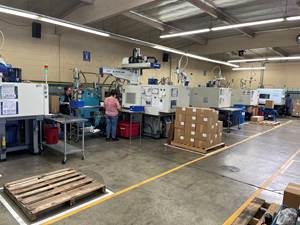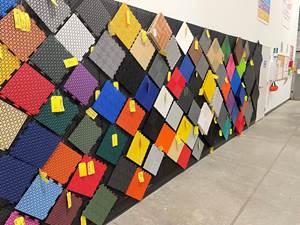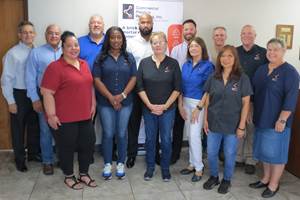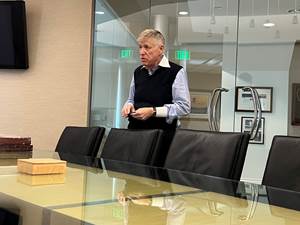Generation Gap? Not at Packaging Personified
Started at a kitchen table and now in its third-generation of family involvement, this vertically integrated supplier of flexible packaging traces its success to closely aligning with customers and continually investing in new technology across its films, printing and converting operations.
The plastics processing industry is replete with companies whose origins can be traced to a garage. But Dominic Imburgia and Phyllis Muccianti had no such luxury. With “a thousand dollars and a kitchen table,” the partners left their jobs and steady paychecks at Sears, where they were part of a purchasing team for flexible packaging materials, bought a phone line and a filing cabinet, and started Packaging Personified. Talk about your humble beginnings.
But that is indeed how this integrated film packaging firm was started in 1975. While moving from a retail giant to a flexible packaging business might sound like a leap, the partners had spent years at Sears and knew their stuff. At Sears, they were responsible for sourcing flexible packaging materials for the company’s private-label products.
Notes Joe Imburgia, son of Dominic and who, along with his brother Dan are the company’s general managers, “Basically, they saw a market that was expanding pretty rapidly, and in their prior roles were exposed to a lot of companies with varying capabilities and skill sets. They looked at flexible packaging as a market that was growing with opportunities to expand and develop even further.”
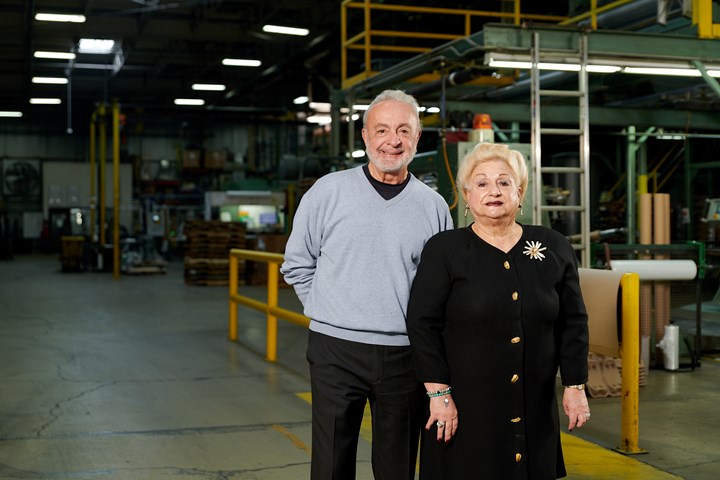
The company, now headquartered in Carol Stream, Ill., with a second plant in Sparta, Mich., started as a third-party broker, matching packaging producers with end users they knew from their years at Sears. Two years later, the co-founders bought a local company out of bankruptcy, and, as Dan Imburgia recalls, started converting film on equipment literally held together by hanger wire. “My dad and Mrs. Muccianti spent the day selling film, and at night converting it,” he says.
Not long after, the two purchased the assets — four bagmaking machines and a factory in Addison, Ill. — of a nearby firm that had gone out of business. Around 1980, Imburgia and Muccianti added printing to their capabilities with the purchase of a used press. Notes Joe Imburgia, “The idea from the start was to create a business that was vertically integrated. That way, the company would have complete control of quality and delivery throughout the value chain.”
That meant Packaging Personified needed film extrusion capacity to close the production loop. That happened in the mid-1980s and necessitated the company’s move from Addison to a building eight blocks away that the founding partners purchased. “And then they modified it themselves,” notes Joe Imburgia. “They built out a second floor, adding office space. As a matter of fact, I remember going in during the summer when I was working for my dad part-time and seeing my grandfather on a ladder boxing out beams in what would be my father’s office.”
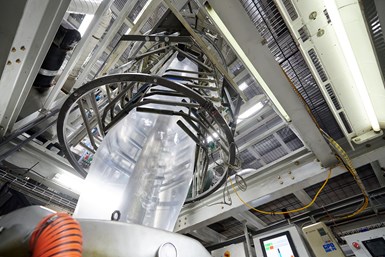
Packaging Personified added blown film capacity in 1989 as part of its strategy to be vertically integrated. Now, between plants in Illinois and Michigan it runs 10 blown film lines, including four configured for three layers.
The company moved into its current location in 1987. Initially, the facility was 40,000 ft2. In the mid-1990s, the company added another 50,000 ft2. Five years ago, Packaging Personified added yet another 40,000 ft2 to its Carol Stream plant.
In 2002, before that last expansion in Carol Stream, the firm bought another flexible packaging business in Sparta, Mich., that was owned by a holding company that had not reinvested and was about to go under. “They had 98 people who worked at this plant,” Joe Imburgia recalls. “They shut down operations officially on a Friday. On Monday, we were able to reopen with 77 of those people still employed. And we took a business that had been losing money for five straight years and made it profitable the first year.”
Today, the technology at both facilities overlaps for the most part. “The intention was for each plant to back the other up,” says Dan Imburgia. “The acquisition was driven mainly by a desire to grow the company further. And the company we acquired in Michigan had access to some customers and markets that we did not have at the time.” Adds brother Joe, “We operated it as is for two years after we bought it, but over time replaced 70% of the building and nearly 100% of the equipment.” This included two new Kiefel (now Reifenhauser) blown film lines, new printing capacity and all the converting equipment.
The 105,000 ft2 in Sparta now houses five extrusion lines, two presses and 16 bag-making machines. Four of the film lines are of the three-layer variety. Another five reside in Carol Stream, including three monolayer lines from Davis-Standard and a new three-layer Reifenhauser line, the firm’s first coex line in Illinois. Dies run from 8 in. to 16 in. diam. All lines have IBC. Two years ago, Packaging Personified added Reifenhauser’s K Design auto-profiling air rings on three of its five lines in Illinois, with plans to add one more. Both plants have railcar sidings. Material is brought to extruders from central vacuum conveying systems. Each extruder is equipped with blending systems for six to 18 components.
The film department considers the downstream departments as its customers. “Our film department doesn’t have to walk more than 500 ft to talk to the customer and see how happy they are.”
Between the two plants, Packaging Personified has capacity for approximately 50 million lb/yr. It runs PE of virtually all types, as well as PP.
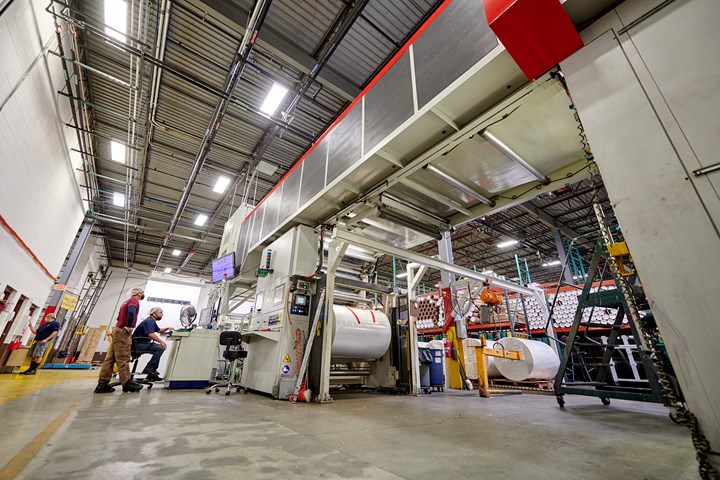
Film produced by Packaging Personified is printed on high-speed presses. As a matter of culture, the film department considers in-house printing and bag making as customers, making it imperative that high-quality film is provided to these downstream departments.
At both facilities, extrusion runs 27/7/365. The press room runs 24/5, as does slitting. The converting department runs two shifts five days a week. As a matter of corporate culture, the film department of Packaging Personified considers the downstream departments as its customers. Joe Imburgia explains, “We've got a new printing press that is set up to run 20% faster than our current press, with which we have had great success. Both can handle 40-in. diam. rolls. If you want to run thin PE film — as thin as half a mil — at that speed, you better have good film. That’s our canary in the coal mine. Our film department doesn’t have to walk more than 500 ft to talk to the customer and see how happy they are.”
Packaging Personified participates in a wide range of markets, making bags for a variety of products and markets, including baked goods, tabletop disposables, produce, agriculture goods and ice, as well as rollstock for most vertical and horizontal form-fill-and-seal applications.
Competing with the Big Guys
When you’re competing in the flexible packaging business, odds are you’ll go up against larger companies with more resources and more clout. But Packaging Personified has carved a niche by being vertically oriented, investment-minded, nimble and customer-centric. Comments Dan Imburgia, “We constantly reinvest in the business. In fact, over the last 18-24 months we have added one new printing press, two new extrusion lines and 10 new bag-making machines. We're also able to provide more personal understanding and a personal relationship to our customers, where they aren’t just a number.”
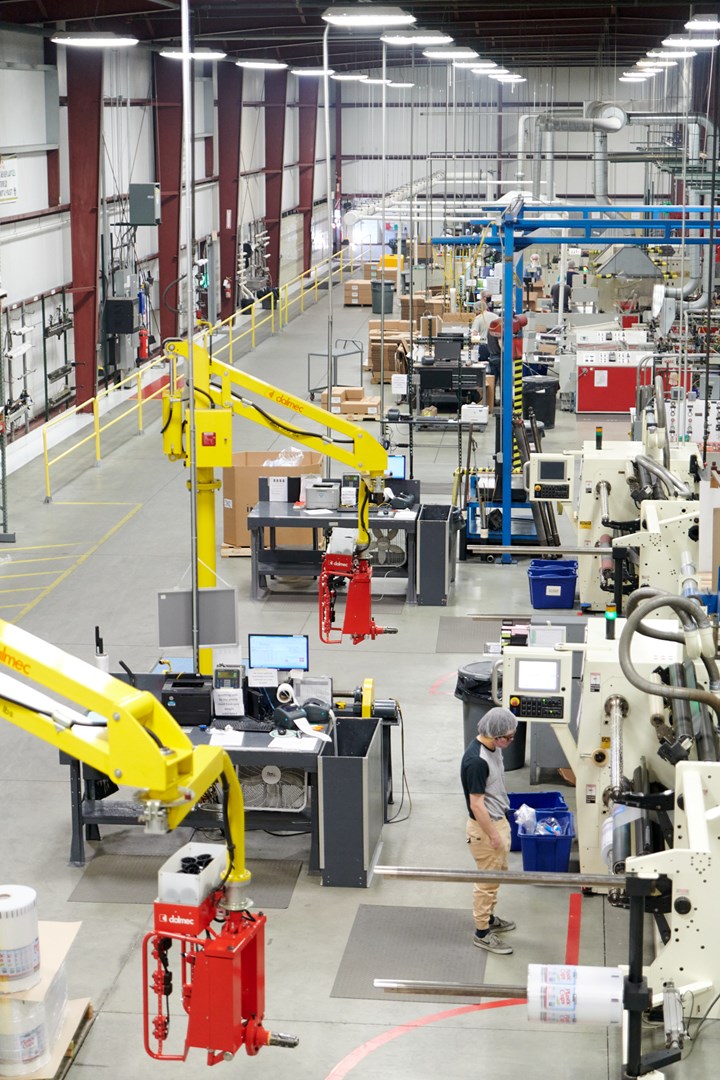
At the slitter rewind, Packaging Personified uses automated roll handling to lift and place heavy rolls on a skid, which is then brought to downstream operations.
He continues, “We don’t operate from a kitchen table anymore; in fact, between the two plants, we employ about 240 people. But we still have that entrepreneurial spirit within the organization where we have the willingness and the interest to collaborate with our customers and go the extra mile to understand their needs and make sure we take care of them.”
Dan Imburgia continues, “There are plenty of packaging customers that feel like their volumes prevent them from getting the service they need from some of the larger companies in our industry. We feel our size and structure allow us to meet those customers’ service expectations, backed by the robust capabilities of a large-scale manufacturer.” Packaging Personified’s minimum order quantity is typically 1000 lb, but Dan Imburgia notes that “if customers need help with something that’s 500 lb, we’re going to take care of it.”
Being a family-owned business — with third-generation members now fully engaged in the company — has also helped. “Customers still value relationships,” says Dan Imburgia. “They want to know who they're working with. We are a fairly flat organization and don't have a lot of layers of management by design. Our customers don’t have to go through a lot of bureaucracy and red tape.
“As owners who are directly involved in the business, we make ourselves accessible. I think our customers appreciate that we are here to offer support, hear any issues they may have and help solve whatever problems may arise.”
“I think our customers appreciate that we are here to offer support, hear any issues they may have and help solve whatever problems may arise.”
This, not surprisingly, has resulted in a good bit of Packaging Personified’s growth being organic. States Dan, “Of course we push for new customers in an effort to expand our base. At the same time, we have exceptional organic growth with our existing customer base. So, a customer that started with us with maybe one product or two product lines will tend to incrementally add more lines as a result of their experience with us.”
Product Development Specialists
At Packaging Personified, product development is by and large driven by customers. But there have been many instances over the years where the company presents solutions to customers to solve problems they may not know they had.
Says Dan Imburgia, “We've come up with a line of films we call lamination replacement. They're coex films that are intended to replace the need to laminate because they have more stiffness and other properties typically only achieved with laminations. We're constantly looking at how to improve yield by enhancing properties and reducing gauge.”
Joe Imburgia adds that development also comes from the company’s close relationship on the supplier side, in particular with materials companies. “We partner with some very, very good brands on the supplier side, and they've got R&D teams that are developing solutions. We find ourselves a target for our supplier base, who will say, ‘Hey, will you work with us on this? Will you partner with us on this?’ We've seen some opportunities come that way.”
The films that Packaging Personified developed to replace multi-material laminates are all-PE films that can be recycled; they also have about 50+°F temperature differential between the outside layer and the sealant layer. So they found that in addition to standup pouches these films are also useful in form-fill-seal applications.
Notes Joe Imburgia: “At the end of the day, it comes down to whether you can deliver what the customer wants, and while we might not be at the same scale as some of our larger competitors, we consistently invest to make sure we have all the capabilities our customers need while delivering the value they expect.”
Related Content
Back in the Family Business
In its 45th year, Precision Molded Plastics has carved out a technology and market niche, growing not just when opportunities arise but when they make sense, after its leader changed careers to keep the family business from changing hands.
Read MoreInjection Molder Bases Company Culture on Employee Empowerment
After more than two decades in the industry, Rodney Davenport was given the opportunity to create an injection molding operation in his own vision, and — in keeping with the product he was making — to do so from the ground up.
Read MoreInside the Florida Recycler Taking on NPE’s 100% Scrap Reuse Goal
Hundreds of tons of demonstration products will be created this week. Commercial Plastics Recycling is striving to recycle ALL of it.
Read MoreUS Merchants Makes its Mark in Injection Molding
In less than a decade in injection molding, US Merchants has acquired hundreds of machines spread across facilities in California, Texas, Virginia and Arizona, with even more growth coming.
Read MoreRead Next
See Recyclers Close the Loop on Trade Show Production Scrap at NPE2024
A collaboration between show organizer PLASTICS, recycler CPR and size reduction experts WEIMA and Conair recovered and recycled all production scrap at NPE2024.
Read MoreLead the Conversation, Change the Conversation
Coverage of single-use plastics can be both misleading and demoralizing. Here are 10 tips for changing the perception of the plastics industry at your company and in your community.
Read MoreMaking the Circular Economy a Reality
Driven by brand owner demands and new worldwide legislation, the entire supply chain is working toward the shift to circularity, with some evidence the circular economy has already begun.
Read More








